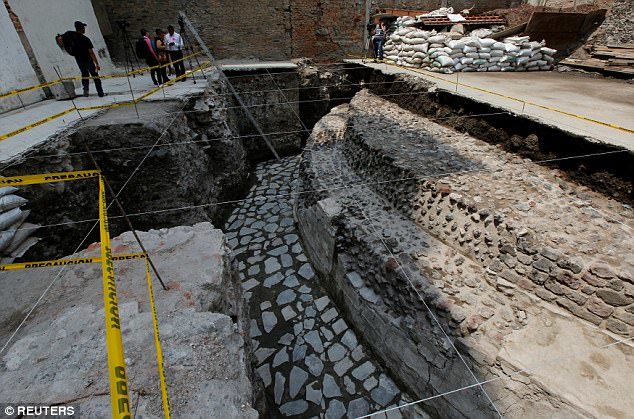
Excavators also uncovered 32 sets of human neck bones at the site, which are likely to be remains of people who were decapitated as part of the game. The rare finds, including the semi-circular temple of Ehecatl-Quetzalcoatl and nearby ball court were revealed yesterday.
Archaeologists believe the temple celebrated the god of the wind and was built between 1486 and 1502.
And records indicate that Spanish conquistador Hernan Cortes first watched the ritual Aztec ball game at the court in 1528, invited by the last Aztec emperor, Montezuma - whose empire he went on to conquer.
The details of the game remain a mystery to the archaeologists, but the discovery of several neck bones suggests it had an element of human sacrifice.
Only a staircase and a portion of the stands remains of the ball court, although archaeologists estimate the original court was about 50 metres long.
The temple, meanwhile, is a giant semi-circle perched atop an even larger rectangular base, that once measured some 34 metres across and four metres high, archaeologists said.
The ancient structures are the latest ancient vestiges to be discovered in the historic city centre, at what is known as the Great Temple site.
Maria Cristina Garcia, Culture Minister, said: 'The discovery we are looking at is a new chance to immerse ourselves in the splendour of the pre-Hispanic city of Tenochtitlan.'
A hotel formerly stood on the site of the newly discovered ruins until 1985, when it collapsed in a catastrophic earthquake that killed thousands of people.
The hotel's owners then noticed the ancient remains and alerted the National Institute of Anthropology and History.
Officials said they plan to open the site to the public, although no date has been set.



Reader Comments
to our Newsletter